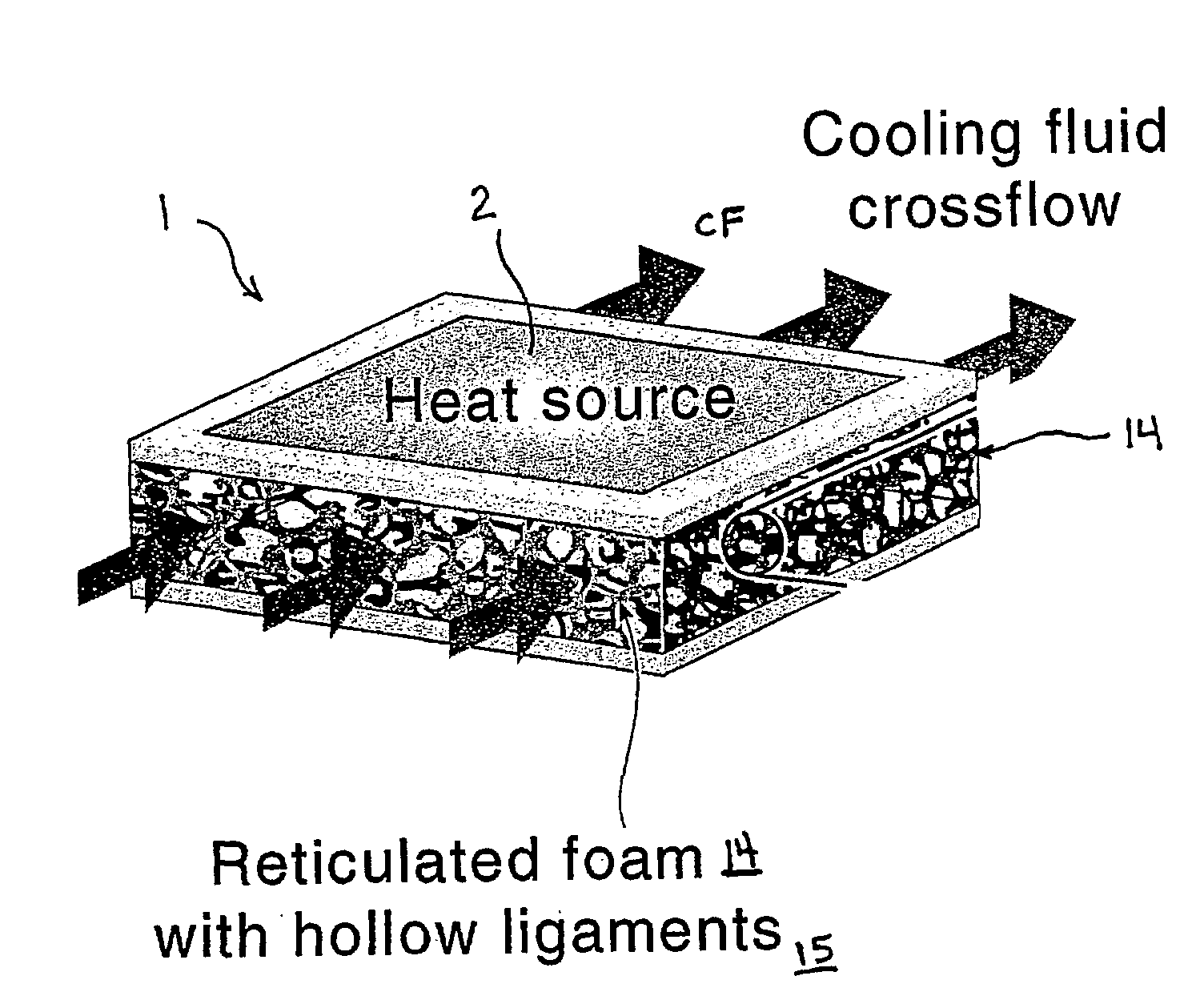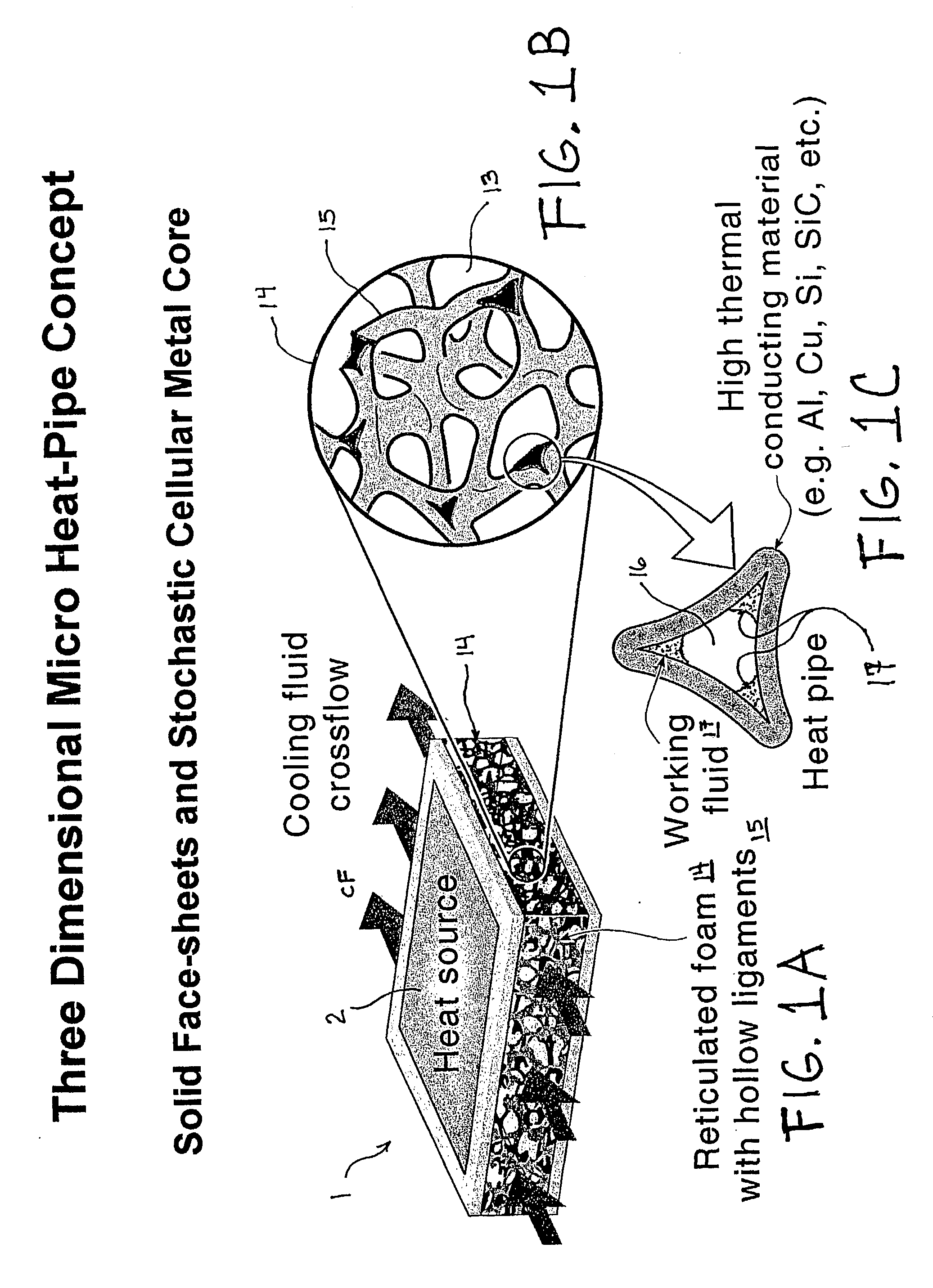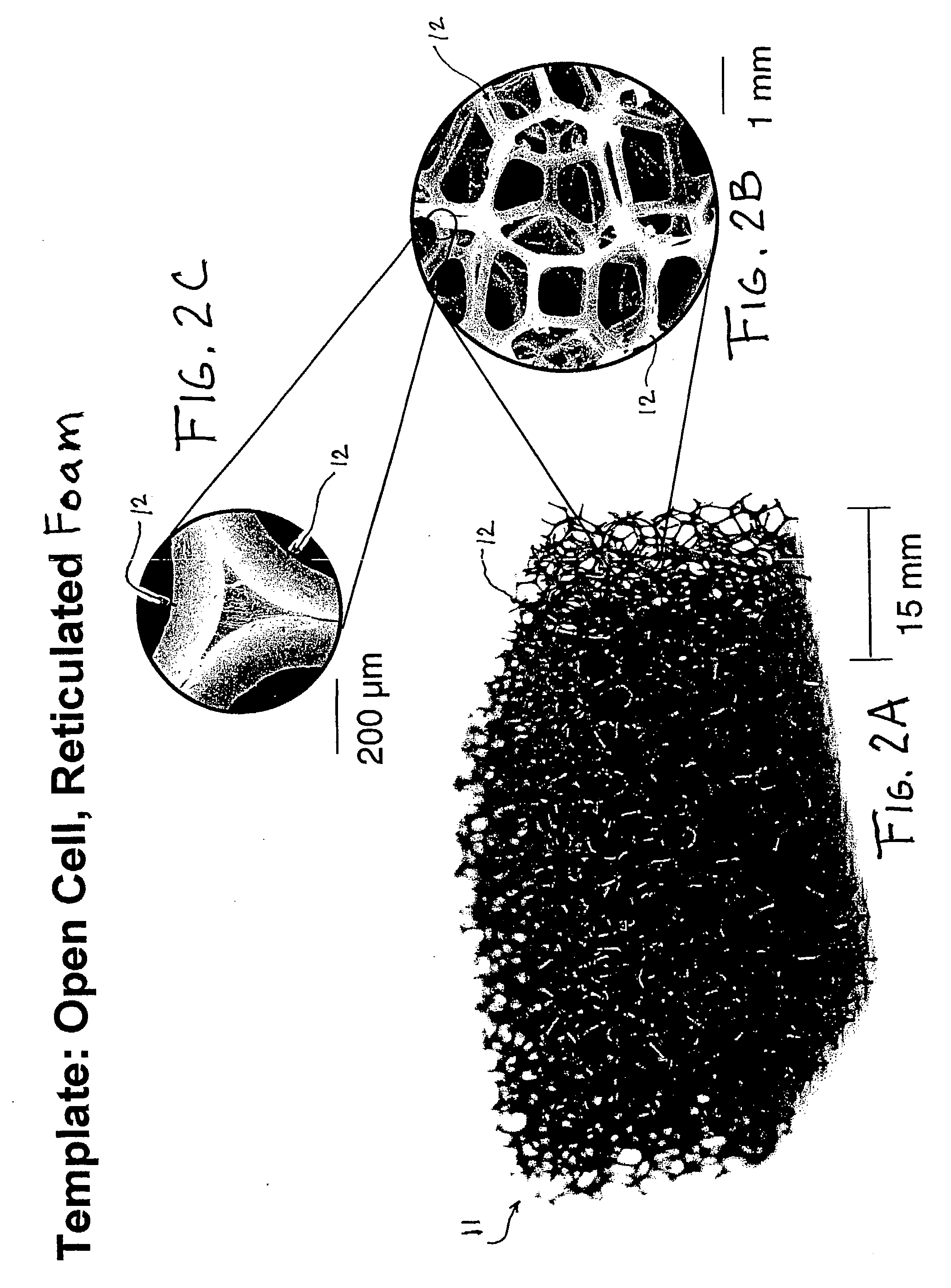Heat exchange foam
a technology of heat exchange foam and foam material, which is applied in the direction of indirect heat exchangers, vacuum evaporation coatings, lighting and heating apparatus, etc., can solve the problems of difficult use in small devices and other applications, difficult to remove heat from small hot objects, and foam materials that do not utilize convective forces, etc., to achieve the effect of reducing the temperature gradient and increasing efficiency
- Summary
- Abstract
- Description
- Claims
- Application Information
AI Technical Summary
Benefits of technology
Problems solved by technology
Method used
Image
Examples
example 2
Filling the Internal Volume with Working Fluid in a Vacuum Chamber
[0078] Seal all ends of the hollow ligaments, except for those through which working fluid will be introduced into the internal volume. Place foam in a vacuum chamber and evacuate the chamber. While the chamber is still evacuated, charge the internal volume with the appropriate quantity of working fluid, possibly through the use of tubing to deliver the working fluid to the internal volume. Seal off the remaining ends of the hollow ligaments to prevent escape of the working fluid.
example 3
Filling the Internal Volume with Working Fluid via Evaporation of the Fluid
[0079] Seal all ends of the hollow ligaments, except for those through which working fluid will be introduced into the internal volume. Charge the internal volume with a quantity of working fluid in excess of that amount desired to remain sealed in the internal volume, possibly by immersing the open ends of the hollow ligaments in a bath of the working fluid (working fluid will, for example, partially fill the internal volume via capillary action). Heat the working fluid to a temperature above its boiling point. The working fluid vapor will escape the internal volume and will evacuate the internal volume in the process. When the appropriate quantity of working fluid remains in the internal volume in liquid phase, seal off the remaining ends of the hollow ligaments.
[0080] By way of example, some preferred methods for sealing the ends of the hollow ligaments are (1) using an epoxy or other resin or glue to fill...
example 4
Production of a Periodic Interconnected Truss Network with Hollow Ligaments
[0081] FIGS. 10A-10C show a schematic representation of another preferred embodiment of the present invention wherein a interconnected network is provided having a periodic truss structure 24 made up of an array of intersecting structural support members whereby the structural support member form the hollow ligaments 22 . The interconnected networks include periodic truss structures 24 comprising intersecting structural support members that may be used to form the hollow ligaments 22 using the various deposition processes described above
[0082] The resultant hollow ligaments 22 that have a substantially circular cross section will require an internal wicking structure 25 to effect a heat pipe, as shown in FIGS. 10B-10C (whereas ligaments with acute corners do not require the additional wicking structure). The wicking structure has two functions. It is the vehicle and mechanism through which the working fluid r...
PUM
| Property | Measurement | Unit |
|---|---|---|
| Temperature | aaaaa | aaaaa |
| Temperature | aaaaa | aaaaa |
| Temperature | aaaaa | aaaaa |
Abstract
Description
Claims
Application Information
 Login to View More
Login to View More - R&D
- Intellectual Property
- Life Sciences
- Materials
- Tech Scout
- Unparalleled Data Quality
- Higher Quality Content
- 60% Fewer Hallucinations
Browse by: Latest US Patents, China's latest patents, Technical Efficacy Thesaurus, Application Domain, Technology Topic, Popular Technical Reports.
© 2025 PatSnap. All rights reserved.Legal|Privacy policy|Modern Slavery Act Transparency Statement|Sitemap|About US| Contact US: help@patsnap.com



